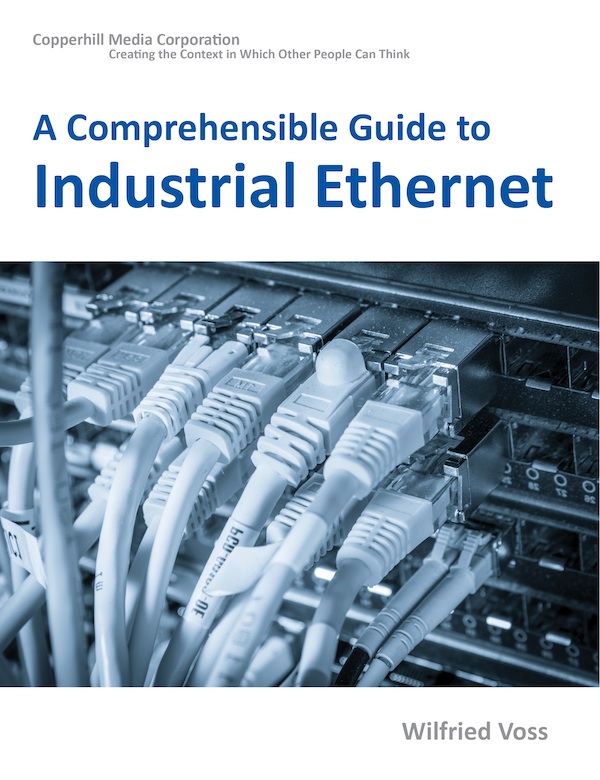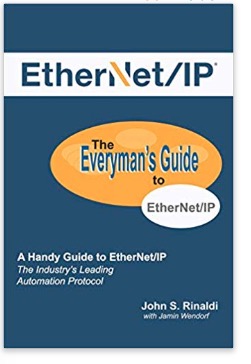Recent Posts
Industrial Ethernet Guide - Selecting The "Right" Ethernet Technology
Posted by on

The following is part of A Comprehensible Guide to Industrial Ethernet by Wilfried Voss.
"I daresay that your best bet is to talk to a vendor
that you are used to dealing with and that you trust. Having support when
implementing a network is more important than which network you pick.”
– Advice
found at a technology forum
Selecting the “right” Ethernet Technology depends on a significant number of factors (with being informed as the most important one), and there is a good reason why “right” comes in quotation marks.
Note: The majority of automation tasks in the world do not require Industrial Ethernet for process control!
The above statement is not quite as bold as it may appear at first look, and it is far from being an argument against the use of Industrial Ethernet, but it emphasizes the need to look into the technology, its capabilities, and, most importantly, its costs.
It is a common misconception that Industrial Ethernet solves all the problems of older and established technologies, and costs are still a strong argument for the majority of plain I/O control and against Industrial Ethernet (regardless of what various Industrial Ethernet user/standardization organizations proclaim).
When it comes to plant-wide networking, it is feasible to add standard Ethernet TCP/IP interfaces to existing control devices (See also chapter The Ethernet Technology Plant of the Future).
On the other hand, Industrial Ethernet is a blessing for high-speed, high-precision motion control applications, specifically robotics, but also vision systems and control systems with a vast number of I/O signals.
Industrial Ethernet technologies are most suitable for:
- Closed-Loop Control in a Real-Time Control System
- Support
of Real-Time Control Outside the Main System
(See also chapter Real-Time Works Only in a Box) - Support of Larger Physical Distances
- Timely Support of a Vast Amount of I/O Signals (e.g. Multiple Thousands)
- High-Speed, High-Precision Motion Control
- Processing Great Amounts of Data (e.g. Vision Systems)
The decision to use Industrial Ethernet may only be one of the above reasons or a combination thereof.
The selection of the right Industrial Ethernet technology is, nevertheless, highly application-specific, and in case of turnkey solutions, it may be more or less political. However, when it comes to high-demanding automation tasks, it is worth comparing the various protocols and how they match the application requirements.
In many cases, the real-time performance is the deciding technological factor, while the manufacturing and management mind will appreciate the networking capabilities.
EtherNet/IP: The Everyman’s Guide to The Most Widely Used Manufacturing Protocol
EtherNet/IP came roaring into the 21st century on the backs of DeviceNet and ControlNet, claiming world domination (almost) as the most widely used protocol in manufacturing.
While it’s pervasive, EtherNet/IP isn’t necessarily standard knowledge to everyone on the factory floor. Admit it; maybe you find yourself losing sleep over questions such as
- Is EtherNet/IP an IoT transport protocol?
- Are EDS files important for an EtherNet/IP adapter device?
- Which is better: EtherNet/IP or PROFINET IO?
- Isn’t EtherNet/IP just CIP over an Ethernet connection?
- How many ways are there to organize device data into a CIP Object Model?
- What is the Assembly Object Class?
- Can the EtherNet/IP encapsulation to encapsulate other automation protocols?
- Does it matter which TCP/IP stack we use to build an EtherNet/IP device?
- Is DeviceNet obsolete or complementary to EtherNet/IP? How important is the compliance test process?
- Is CoCO good for an EtherNet/IP scanner device, or delicious with marshmallows?
Toss and turn no more! With this handy guide on your bedside table, you’ll be able to navigate the world of EtherNet/IP and, who knows, maybe entertain a companion with exciting tidbits. Dip into any chapter, in any order, and you’ll find plenty of clear explanations, with tables and diagrams, to guide you through EtherNet/IP.
 Loading... Please wait...
Loading... Please wait...

